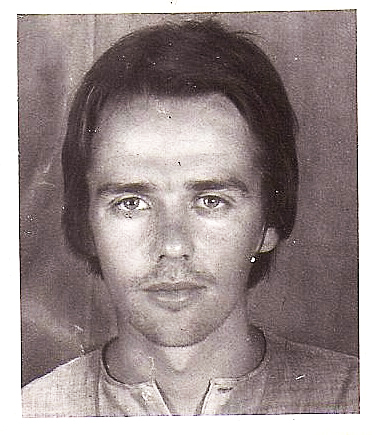HARPO THEATRE / MUSIC EVENT (in Toowoomba, Australia, 1972)
The Super 8 film shows a team arriving from Brisbane to set up for a HARPO performance event at the Darling Downs Institute of Advanced Education in Toowoomba in July, 1972.
HARPO was formed in Brisbane, Australia, in late 1971 as a counter cultural organization promoting alternative music, theatre, politics and healthy living. It had its roots in several earlier organizations.
Prominent HARPO founding members included Graham Cathcart and Bomber (Robert) Perrier. John Stanwell was an early and also influential member. Other active members included Stuart Matchett, Ken McSwain, and Colin Beasley (among many others).
The name Harpo was originally chosen simply because it was an interesting-sounding name. Then somebody joked H.A.R.P.O. stood for "How About Resisting Powerful Organizations." The acronym stuck, giving the appearance this was the original idea behind the group's name all along.
The first of the famed "Harpo's Nite Out" concert events was held in the University of Queensland refectory building in March, 1972. It featured a combination of political theatre and live music. The theatre performance was by the Laurence Brown Theatrical Troupe (another name HARPO chose because it had a nice ring to it - there was no Laurence Brown). The troupe had evolved from an earlier performance group, Romp Street Theatre.
The headline band was MACKENZIE THEORY from Melbourne. The band was so popular, they became a regular main stay of Harpo’s Nite Out events. Mother's Lightworks (Phil Hutson) did the psychedelic light shows, and Peter Gray contributed to the atmosphere with his quadraphonic-sound system (Electronic Excursions).
A second "Harpo's Nite Out" followed at the same venue on 8 July, 1972, with even bigger crowds in attendance. The supporting act was Brisbane-based band, SHEPHERD, and THE CLITETES also appeared.
This second show was the beginning of a road tour sponsored by the Australian Union of Students (AUS). The tour helped spawn a newly evolving, co-operative, working relationship with Johnny Allen and Graeme Dunstan of Aquarius fame, key figures in AUS at the time.
The day before, 7 July, the tour officially kicked off with a show performed at the Toowong High School. The Toowoomba event, seen in this film, was the third engagement of the tour. Next stop was the campus in Armidale, and finally the tour continued on to campuses in Sydney.
The first two "Harpo's Nite Out/s" coincided with the publishing of a tabloid newspaper called, "HARPO: The Alternate Organ." A pile of these newspapers is seen stacked up in front of the spare tyre (tire) in the back of the HARPO van at 3:51, awaiting distribution during the tour.
Local Brisbane band, SILAS FARM, played before the regular headliners, the Laurence Brown Troupe and MACKENZIE THEORY at later Harpo’s Nite Out concerts in 1973.
Harpo’s Nite Out drew inspiration from FOCO, a legendary, multi-media, cultural event started by radical unionists and students held on Sunday nights in Brisbane’s Trades Hall in 1968 and 1969. Harpo’s Nite Out, in turn, inspired the 4ZZZ Joint Effort, popular concert events showcasing emerging rock bands, organized by independent radio station 4ZZZ-FM in the mid 1970s as their main fundraising activity.
HARPO worked "organically" in a loose organizational structure with the attitude "we can do anything"......and they did. In June, 1972, HARPO took over the running of Wholefoods Organic Food Co-op in Milton Road, and for a time the running of Mr. Natural's Food Kitchen, a vegetarian restaurant on Schonell Drive near the university. HARPO headquarters were flats in an old house behind the Toowong library where Bomber Perrier and Graham Cathcart lived.
"Laurence Brown" developed the guerrilla street theatre troupe, the Harpo Super heroes with Steel Sheila, Wonder Wombat, Zap Crapper, Laughing K. Kookaburra, et al. One of the Super heroes (Bomber Perrier) managed to convince the iconic American beat poet, Allen Ginsberg, to do a concert of readings in Brisbane before returning to the US after the Adelaide Festival. Ginsberg appeared with visiting Russian poet, Andrei Vosnesensky. The Super heroes crashed their own press conference, and Ginsberg reportedly loved this because it reminded him of the San Francisco Mime Troupe.
HARPO made a two-hour radio program called "The Whole Earth Radio Show" for the ABC, which was produced in the broadcaster’s conveniently-located Toowong studios right near HARPO “headquarters”.
Another concert event organized in conjunction with AUS featured Phil Ochs (singer/songwriter) and Ron Cobb (cartoonist), both visiting from the US. HARPO went on to assist AUS with the pre-planning phases for the Aquarius Festival to be held at Nimbin, NSW, in May, 1973. Graham Cathcart was employed by AUS to assist with the logistics of the festival, and HARPO members and other Brisbane volunteers made several reconnaissance and work trips to the area. Shortly before the Aquarius Festival, HARPO members assisted Johnny Allen and Graeme Dunstan in putting on a "happening" in the Nimbin town hall to introduce the concept of the upcoming festival to the local residents.
The Melbourne-based band, MACKENZIE THEORY, was a regular guest featured at Harpo's Nite Outs. The MACKENZIE THEORY sound was centred on the inventive and fiery guitar playing of Rob MacKenzie teamed with the electric viola of the classically-trained Cleis Pearce. The line-up was rounded out with bassist Mike Leadabrand and drummer Andy Majewski. The band released two live LP albums "Out of the Blue" and "Bon Voyage" in 1973 and 1974. The band is seen briefly right at the end of the film.
Founding HARPO member, Graham Cathcart, died tragically of typhoid fever at the Holy Spirit Hospital, New Delhi, India, on 10 August, 1974, at age 23. Below is a copy of Graham's passport photo taken just before his ill-fated travels.....

This film is dedicated to Graham's memory (Graham is seen with acoustic guitar in the film at 3:05).
The film is also dedicated to the spirit of those times as the younger generation emerged from the oppressive conservatism and restricted thinking of post-war Australia.